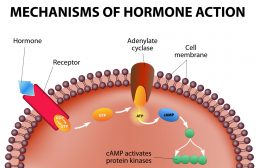Table of Contents
Definition
noun
i·so·malt, ˈaɪ sə mɔlt
A sugar alcohol made up of two polyols: glucose-mannitol and glucose-sorbitol, and used chiefly as a sugar substitute
Details
Overview
Isomalt is one of the sugar alcohols. Sugar alcohols belong to a class of polyols characterized by being white, water-soluble, organic compounds with a general chemical formula of (CHOH)nH2. Sugar alcohols may be produced by the hydrogenation of sugars.
History
Isomalt was first developed in 1957 by a team of scientists from the German company and the largest sugar producer in Europe, Südzucker AG. Isomalt is marketed as Palatinose and Palatinit. The names were derived from a region in Germany (i.e. Palatinate) where isomalt was developed.1 Isomalt has been approved for use as a sugar substitute in foods and drinks in the United States since 1990. Other countries that use isomalt in the food industry are Mexico, Canada, New Zealand, Australia, China, Japan, India, and many others.
Properties
Isomalt is a polyol with a chemical formula of C12H24O11. Its name does not end in –itol, which is used as a suffix to refer to a polyol. Perhaps, it is because it is a polyol derivative of two polyols: mannitol and sorbitol. Mannitol and sorbitol are isomers of each other and they can be differed by the orientation of the hydroxyl group on C-2. Both of them have a sweetish taste and as such are used as sweeteners in place of sucrose (common table sugar). While sorbitol is hygroscopic, mannitol is much less hygroscopic. Nevertheless, both of them have laxative effects when consumed in large quantities. Isomalt is low hygroscopic white crystalline compound. It is less sweet than sucrose; its sweetness relative to sucrose is 55%. Isomaltose has a glycemic index (GI) of 9 whereas sucrose has a GI of 65.
Biological activities
Biological activities
No natural form of isomalt has been reported. It is produced semi-artificially by a two-step process. The first step is the transglycosylation of sucrose into isomaltulose via a microbial enzyme to catalyze the process. The last step is the hydgrogenation of isomaltulose. Isomaltulose is a disaccharide derived from sucrose. Like sucrose, isomaltulose is composed of glucose and fructose linked together by α-1→6 glycosidic bond. To produce isomalt, hydrogen atoms are added to the oxygen atom in the fructose component. Consequently, half of the fructose would be converted into mannitol and the other half is converted into sorbitol.
Biological activities
Similar to other sugar alcohols, isomalt is used as a low-calorie sweetening agent in foods and special dietary products. It is present in certain food products, such as candies, chewing gums, chocolates, ice creams, baked goods, fruit spreads, infant formulas, etc. It is also present in cough syrups, mineral supplements, lozenges, and pan-coated tablets.2 In humans, the digestion and absorption of isomalt in the intestine occurs at a relatively slower rate. Accordingly, isomalt is not fully digested into glucose, sorbitol, and mannitol. Only a few is absorbed in the small intestine. Those that are not absorbed will reach the colon where they will be fermented by the colonic bacteria and converted into gases and short chain fatty acids in which some would be used as food by the gut flora whereas others would be absorbed by the colon. 2
Health risks
When ingested in amounts greater than the recommended 50 mg/kg body weight, it may cause abdominal pain, excessive gas (flatulence), loose stools or diarrhea.2
Biological importance
Isomalt has been produced for use in the food industry as sweetener, anti-caking agent, thickener, or emulsifier in foods such as ice cream, confections, chewing gum, candies, butter, pre-cooked pasta, and infant formula. 2 Isomalt, just as most polyol sugar substitutes, provides benefits by not causing spikes in blood sugar and not promoting tooth decay. It is not usually fermented or metabolized by oral bacteria, and therefore it is not converted into acids or other byproducts that contribute to tooth decay. It has a very low glycemic index (GI), which is 9, as opposed to sucrose that has GI of 65. Glucose has GI of 100 and fructose has 25. A high GI means that it can raise blood glucose levels. A consistently high blood glucose level is implicated in diabetes mellitus and obesity. As for the dietary energy, isomalt provides 2 kilocalories per gram, which is also less than that of sucrose (about 4 kilocalories per gram). Similar to other sugar alcohols, isomalt also has laxative effects, particularly when consumed in excess.
Supplementary
IUPAC
- (2R,3R,4R,5R)-6-(2S,3R,4S,5S,6R)- 3,4,5-Trihydroxy-6-(hydroxymethyl)-2-tetrahydropyranyloxyhexane-1,2,3,4,5-pentol
Chemical formula
Synonym(s)
- 1-O-alpha-D-Glucopyranosyl-D-mannitol
Further reading
See also
Reference
- Goldstein, D. (2015). The Oxford companion to sugar and sweets. Oxford New York: Oxford University Press. p.362
- A Sweetener Isomalt: Cooking Facts, Side Effects. (2016, May 2). Retrieved from ://www.nutrientsreview.com/carbs/sugar-alcohol-isomalt.html Link
© Biology Online. Content provided and moderated by Biology Online Editors







